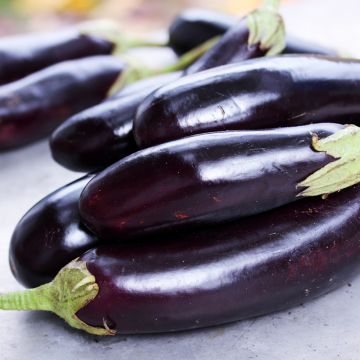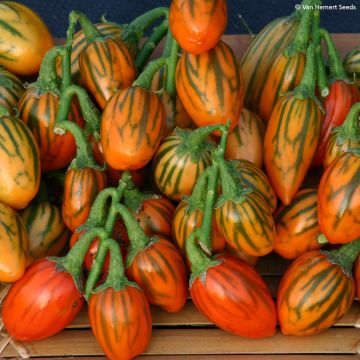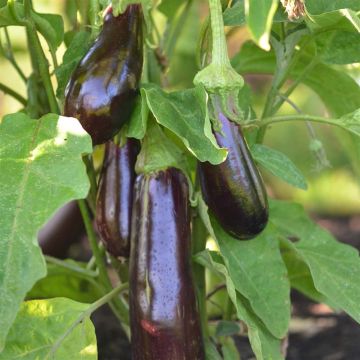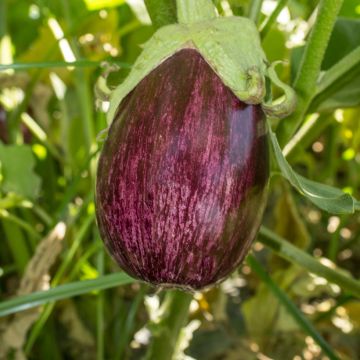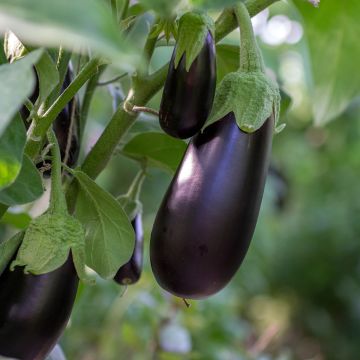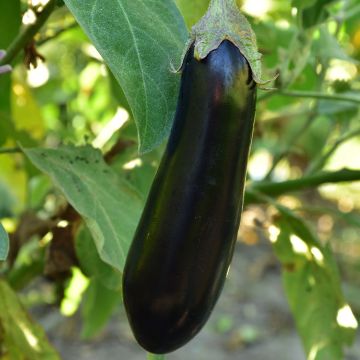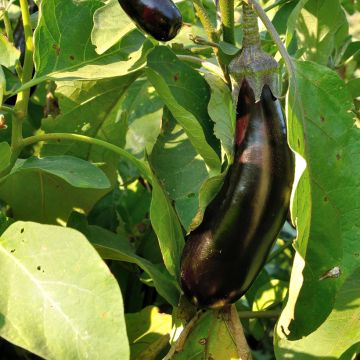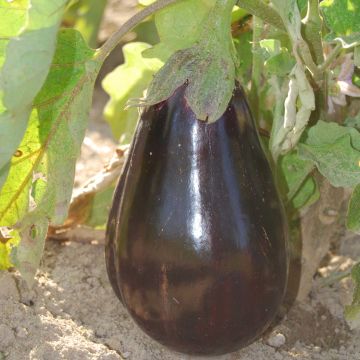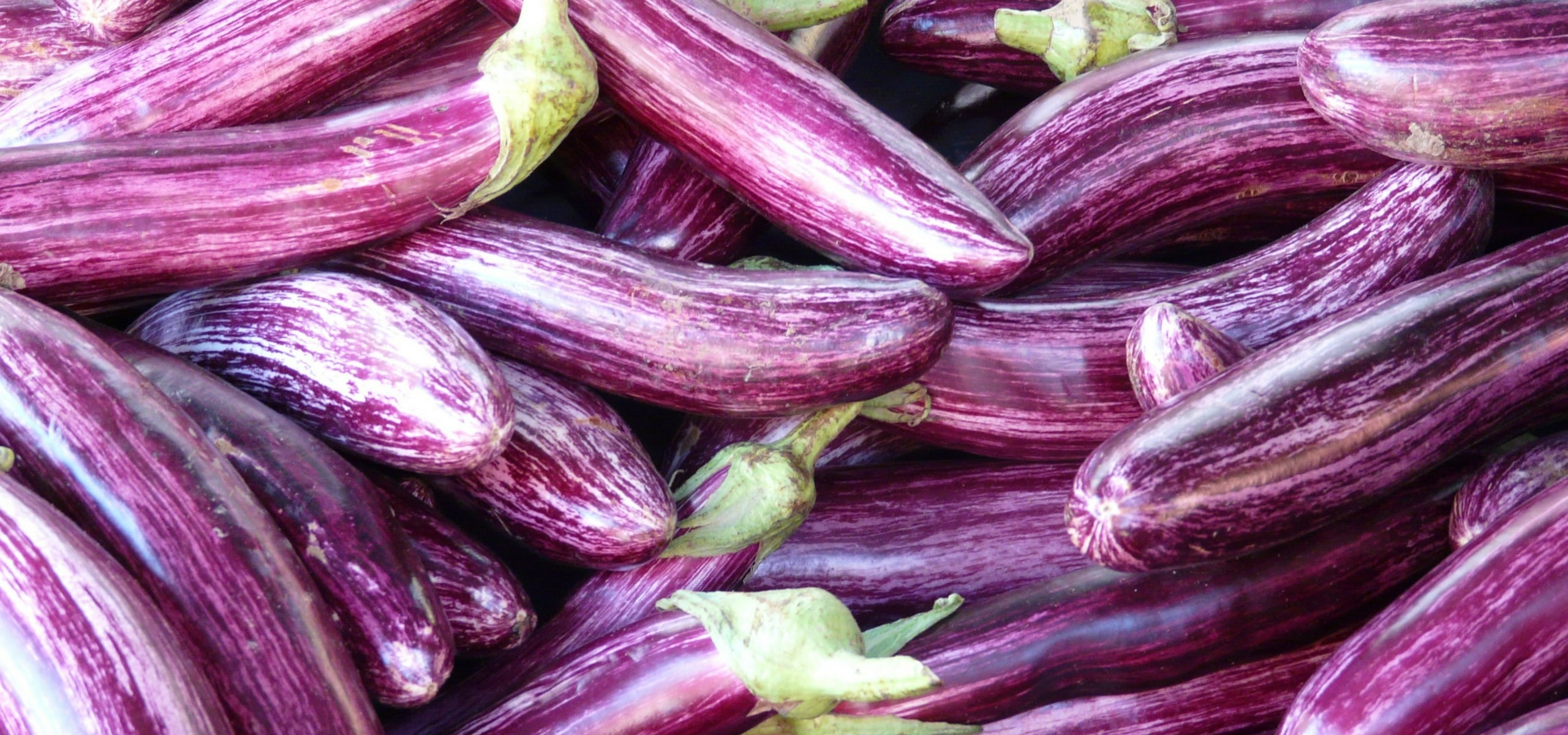
Succeeding in growing aubergines
How to sow, plant, and care for them
Contents
Eggplant is an iconic vegetable of summer and Mediterranean cuisine! It is appreciated for its fleshy fruits, with smooth and shiny skin, and a sweet and subtle flavour. It belongs to the same family as tomatoes, the Solanaceae. It comes in many varieties, distinguished by their colour (ranging from dark purple, almost black, to white, including mauve and pink) as well as their shape (elongated or round). Eggplant can be cooked in a pan or stuffed and baked, and is essential in ratatouille! Discover all our tips for successfully growing it in the vegetable garden to achieve generous harvests.
Where to install aubergines?
Eggplant is demanding; it thrives in rich, well-drained soil and requires warmth and plenty of light to bear fruit. It should therefore be planted in full sun, ideally sheltered from cold winds.
In regions with cool or rainy summers, growing under cover (greenhouse, tunnel) is recommended. It is worth noting that some varieties, such as ‘Bonica F1’, can adapt to this type of climate.
In the vegetable garden, eggplant pairs well with all legumes (Fabaceae) (peas, beans…) which provide nitrogen, as well as with marigold, which helps deter nematodes. However, avoid planting it near other solanaceous plants such as tomatoes, potatoes, peppers, and chillies.
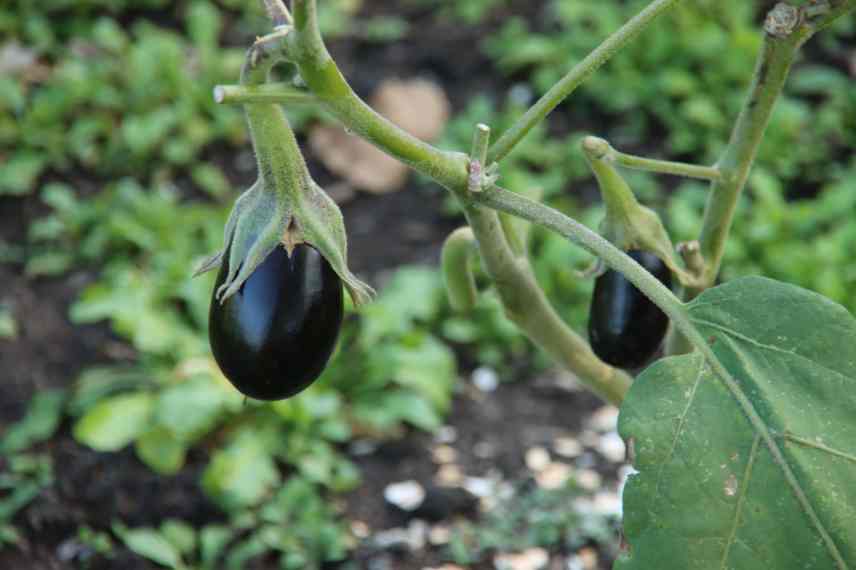
Read also
Sow in warmth or on a hotbedWhen and how to sow them?
Sowing is generally done in March. It takes place in warmth at home or in a heated shelter, with the optimal temperature being 25 °C. Using a heated propagator or placing trays on a radiator improves germination. Direct sowing is possible, but it is reserved for Mediterranean climates.
- Fill pots with special sowing compost.
- Sow the seeds on the surface.
- Cover them with a thin layer of compost.
- Water gently.
- Place the pots in a bright location, out of direct sunlight.
Learn more in our tutorial: How to succeed with your aubergine sowing?
Discover other Eggplant seeds
View all →Available in 1 sizes
Available in 1 sizes
Available in 1 sizes
Available in 1 sizes
Available in 1 sizes
Available in 1 sizes
Available in 1 sizes
Available in 1 sizes
Available in 1 sizes
When and how to plant aubergines?
Planting in the garden takes place when all risk of frost has passed, usually after mid-May, or even June in cooler regions, as young plants of aubergine only develop properly from 15°C. It should be done in previously weeded and loosened soil (or in large pots on the balcony). The young plants should be spaced 50 to 60 cm apart.
- Dig a hole 2 to 3 times the size of the root ball.
- Feel free to mix in some well-decomposed compost, and possibly coarse sand for drainage.
- Place your young plant in the centre of the planting hole, with the graft point level with the soil.
- Fill the hole with soil, then lightly firm it down.
- Water generously.
- You can add a layer of mulch around the young plant to keep the soil cool for longer.
Staking the young plants is not essential, but it is strongly recommended in windy situations.
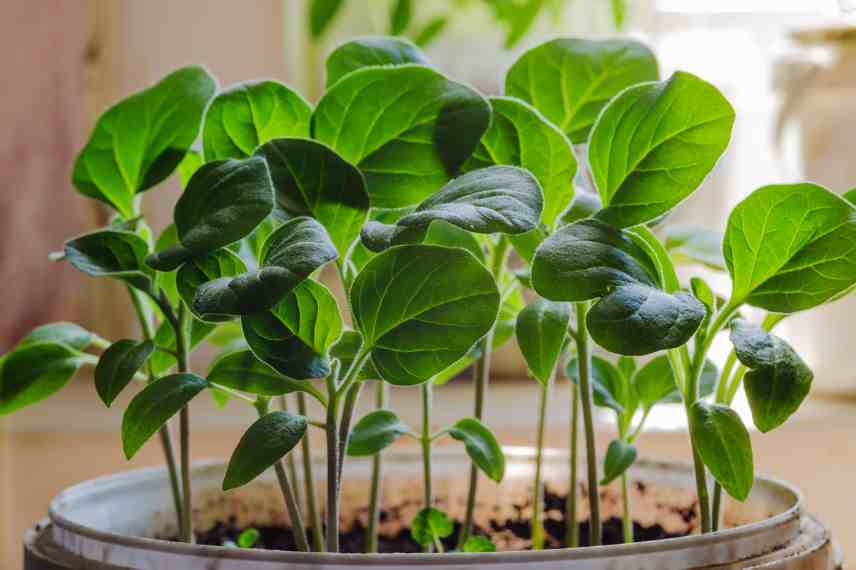
Read also
Choosing auberginesHow to care for them?
To hasten production and achieve larger fruits, you can prune your aubergine plants. Pruning is recommended but not obligatory.
The operation is simple:
- remove the lateral shoots and pinch the plant when it has formed 2 or 3 flower clusters to encourage branching of the plant,
- remove the “suckers” that develop at the base, as they tend to unnecessarily exhaust the plant.
Aubergines are quite tolerant of watering, but do not space them too far apart. Always use water at room temperature and water at the base of the plants, avoiding wetting the foliage. A thick mulch will help space them while reducing weeding, hoeing, and tilling tasks.
What are the pests and diseases of the aubergine?
Eggplants are relatively sensitive. Among the potential pests are aphids, whiteflies (in protected environments), and Colorado beetles. Whiteflies and aphids can be easily eliminated by spraying a manure of peppermint or water mixed with black soap. In the case of a Colorado beetle attack, collect them manually to destroy them and spray a natural insecticidal solution based on pyrethrum. Sowing flax could also help keep them at bay.
Like tomatoes, eggplants can be affected by downy mildew. This disease is caused by a fungus and is characterised by the appearance of dark spots on the leaves. As a preventive and curative measure, spray a solution of Bordeaux mixture (2 grams per litre of water) and repeat the treatment after each rainy episode. In the long term, practice good crop rotation by not returning eggplants to the same spot for at least 5 years.
→ Learn more about eggplant diseases
When to harvest aubergines?
The harvest of aubergines takes place from July to October, and they are harvested as needed and as they develop.
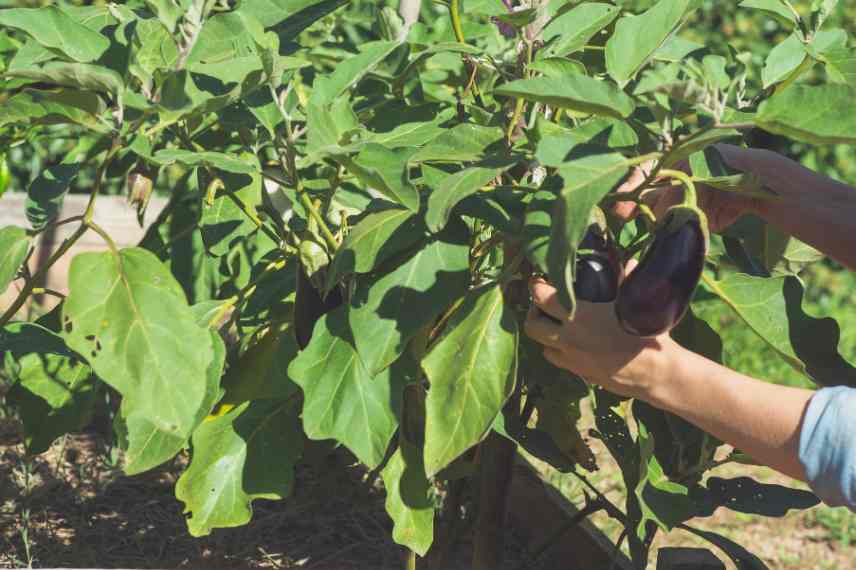
To go further
To learn everything about growing eggplant, discover our complete guide: Eggplant.
- Subscribe!
- Contents































